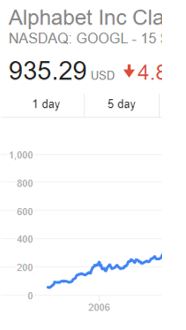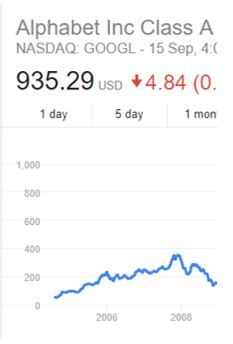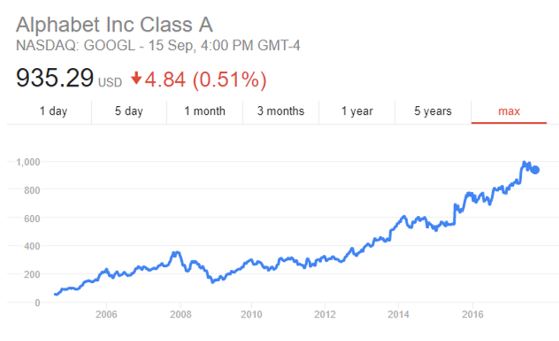Timing, pricing for risk and the earth revolving around the sun
Investment Perspective – February 2016

Peter Flannery CFP AFA
“Neither the investing method nor the fundamentals of the business are right or wrong because the mood of the market is favourable or unfavourable toward the “stock”. That is because when you really think about it, “stocks” (shares) are all about the financials and the trading price, the share price… the cash up value. What matters more is the economics of the business”
Peter Flannery
“Timing is everything” is a phrase I have often heard which I agree is almost always true. It is hard to beat good timing. For example, walking into a difficult meeting late, when it’s almost over is one example that might be considered good timing. Turning up when the dishes and the after-dinner clean-up is almost complete might be another – especially if I am a teenager!
Investing in assets that are cheap is another example that you and I can relate to. For some though it is a bit awkward because when prices are cheap there is a lot of noise going on around that investment that can sound pretty negative.
One of my good clients from the North Island a while back had a brief debate with me about timing and pricing for risk. He reckoned they are the same thing.
Pricing for risk
The concept of timing is pretty straight forward. In investment terms, buy right at the bottom and “Bob’s your uncle” so to speak. Easy to say but actually very difficult to do. In fact, I’m usually happy if we can buy in the vicinity of the bottom which means that we avoid buying at the top.
Mind you, when it comes to real quality investments, the top today can be a lot lower than the bottom in 10 or 15 years. So, buying at the top is not ideal but not all bad for quality businesses.
Pricing for risk then is about justifying the price you pay for a business, taking into account the risks associated with that investment. Already you can see this is slightly different to the share brokers’ momentum approach of chasing popular companies.
Ideally, we look for businesses that use capital well as measured by return on equity and return on capital. For example, a business-like Alphabet (Google) uses capital well. Return on assets is approx. 8.60%. Return on equity is approx. 14.5% – pretty good, especially for a large business and one that has a sizeable percentage of its balance sheet in cash (available but not contributing).
Contact Energy (CEN) on the other hand performs less favourably. Return on assets = 3.27% and return on equity = 3.94%. A comparatively poor performance. Although favoured as a “defensive utility” that pays a reasonable dividend, this business does not perform as well as some others. This places the sustainability of the favourable dividend under question longer term. By the way, like most electricity providers CEN is capital intensive (lots of plant and equipment to maintain and eventually replace – that costs money).
However, I digress! In terms of establishing the risks, there are a variety of factors that one can take into account. Some are external factors (economy related such as interest rates, unemployment, growth, retail spending …) and some are specific to that investment (the sustainable competitive advantage, earnings growth, debt levels …
For example, we may look at a small business (company A) that does not have a sustainable competitive advantage, limited brand awareness, generating no profits but a new idea that may become popular.
This type of investing can generate spectacular returns (e.g. Trilogy, Xero) but can also cost investors as many of those companies just don’t make it. The point here is that the risks involved in those types of companies are high. Therefore … because of the high risk, you and I would not be inclined to pay much to invest in such a company.
To put this another way, you and I would need a high rate of return to compensate us for the high risks that we would need to take if we were to invest.
Let’s now consider company B for example which is a large well-known business with a strong sustainable competitive advantage, strong brand awareness, minimal debt, uses capital well and is steadily growing. Compared to company A, you and I would be happy to pay more per share for such a quality investment because the risk of default is much lower and the chances of achieving a good (if unspectacular) return are strong. Investing with certainty is possible here.
The required rate of return that we need to compensate us for the risks we take then is lower because the risks are less.
Price and value
As a client of WISEplanning you know only too well that price and value are not always the same thing.
Value, whilst difficult to actually nail down to a precise number is essentially the discounted present value of future cashflows (usually calculated over an eight-year period for example). In fact, intrinsic value revolves around the underlying economics of the business rather than last quarter’s profit, the recent guidance from the company or the share price movement over the last couple of months … but you know that already.
Investing is simple, but not easy
There is a massive amount of material available about investing. Once we understand how to invest we can largely block out 99% of the noise.
Of course, for those who do not understand investing too well, the 100% of information available is but one of the hurdles novice investors face. In other words, who do they believe – who do they trust?
You will have noticed that it is not uncommon to hear different financial people talking about the same thing but disagreeing. In fact, if you have been a client of mine for any length of time you would be well aware that the rest of the world sees investing quite differently to the way you and I do. I don’t mind that…at all.
In fact, these differences become quite pronounced particularly when markets are booming. You and I are normally backing off, (im)patiently waiting for the next pricing correction. As prices correct and the world starts fussing about how bad things are, you and I know that our price for risk equation just turned in our favour.
Price and value are not the same thing and when prices decline, the world would have you believe that things are risky. Perhaps there is some uncertainty, however, when the performance of a business remains largely unaffected but the price we pay for it is marked down, lower, cheaper, better value emerges.
If the same quality loaf of bread is on sale, at a discount, cheaper than normal, that is a good time to buy. Same for quality, good performing businesses.
For you and I though we know that as prices decline value emerges. Paying less for an investment usually means less risk. We like that. If we don’t have a proper valuation methodology nor understand “business economics”, then we quite rightly should “be afraid”. How can we possibly price for risk if we do not understand intrinsic value and the importance of business economics?
Planet earth revolves around the sun once every 365 days
This is relevant because as investors we like to benchmark and measure our progress. Typically, this is done on a monthly, quarterly, six monthly or 12-month basis.
Returns are generally measured by return per annum. Quite a good idea actually but it does not tell the whole story.
That is because, if market sentiment becomes negative, investors bail out of investments making the price decline sharply, then if we measure our returns by the cash up value based on price movement, it could be that we are in the negative for the month, the quarter or even for the year. Logic might suggest that investments that do not make money all of the time are risky and we should avoid them. Certainly, many people invest that way. That is to say they don’t invest, they park their money in the bank.

For example, if we had invested in Alphabet (Google) on December 7 2007 we would have paid $357.08 for every share in Alphabet (previously called Google).
If we measured our return by the end of November 2008, the cash up value based on $131.08 would have represented a 65% loss. Not an ideal scenario if we needed those funds after 12 months. Of course, investing in productive assets in the short term is just plain silly. That is why we have a proper plan that includes short term cash, medium term realisable assets and long term productive assets that grow and maintain the buying power of our capital.


Fast-forward to February 8 2016 and you would pay $682.74 for each share of Alphabet.
Obviously if we had judged the business economics of Google by the drop in share price back in 2008, without understanding simple business economics, we might have been inclined to cash up, run away and never come back!
But you and I know better than that. The trading price of Alphabet has more to do with market sentiment and trading logarithms on a day-to-day basis. It has much less to do with its sustainable competitive advantage and the billions of dollars sitting in cash.
By the way, as a point of interest I have shown Class C shares in this example. Actually, I would normally recommend Class A shares because they have the voting rights whereas Class C share do not. I regard those voting rights as worth having.
Anyway, the earth rolls around the sun once every 365 days or so and many people judge their investments by that 12-month calendar. Nothing wrong with keeping the score and benchmarking. We just need to be careful about how we interpret the information.’
Markets (and therefore share prices) do not conform to the earth revolving around the sun, or any other calendar time frame. It is more likely that a full moon affects otherwise sound and logical behaviour.
For many, investing is counter-intuitive. In other words, you and I know that a lower price can usually mean better value and lower risk for a quality investment. For most people though a declining price is a measure of risk and something they run away from. That is why prices decline. The market is fearful.
And you know … that is why you and I “go there” when others won’t … price is one thing, value is usually quite another.
In my experience, the market is usually valid – but not always right…
“If I liked the company at $200 (per share), I like it better at $150.“
Warren Buffett
